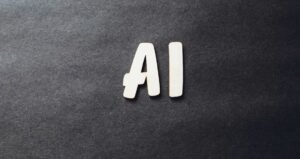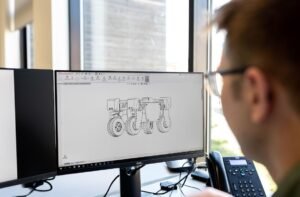Training AI on Images
Artificial Intelligence (AI) has been revolutionizing various industries through its ability to analyze and interpret vast amounts of data. Training AI on images is a powerful application that enables machines to learn and identify patterns, objects, and features within visual data. This technology has significant implications across fields such as healthcare, manufacturing, transportation, and more. In this article, we explore the process of training AI on images and how it is shaping the future.
Key Takeaways
- Training AI on images allows machines to analyze and interpret visual data.
- AI-powered image recognition has a wide range of applications in various industries.
- Deep learning algorithms are commonly used to train AI on images.
Training AI on images involves using deep learning algorithms to process and understand visual data. These algorithms, inspired by the structure and function of human brains, consist of artificial neural networks that can recognize complex patterns and extract meaningful information. By exposing the AI model to thousands or even millions of labeled images, it learns to identify and classify objects, scenes, and characteristics within images.
**Deep learning algorithms have revolutionized image recognition**. These algorithms are capable of automatically learning hierarchical representations of visual data, making them more accurate and capable of handling complex images. *For example, an AI trained on images of cats and dogs can accurately classify new images of cats and dogs based on their learned features and patterns.*
The training process involves several steps:
- **Data collection**: A large dataset of labeled images is required to train the AI model effectively. The dataset should represent the variety of objects or features the model needs to identify.
- **Preprocessing**: The collected images are preprocessed, which may involve resizing, cropping, normalizing, or enhancing them to ensure consistency and enhance the AI model’s performance.
- **Training**: The preprocessed images are used to train the AI model using deep learning algorithms. The AI model iteratively adjusts its parameters to minimize errors and maximize accuracy.
- **Validation**: A separate set of images, called the validation set, is used to evaluate the performance of the trained model and fine-tune its parameters if necessary.
- **Testing**: Finally, the trained model is tested on a set of images it has never seen before to assess its generalization capabilities and overall accuracy.
The Importance of Training Data
The quality and diversity of the training data are crucial for training AI on images. The dataset should include a wide range of images representing different variations, angles, lighting conditions, and background clutter. Having a sufficient amount of labeled data helps the AI model generalize better and reduces the risk of overfitting, where the model performs well on the training data but poorly on new, unseen data.
**Image augmentation techniques** are often used to artificially increase the size and diversity of the training dataset. *For instance, through image rotation, flipping, zooming, or introducing noise, the AI model becomes more robust and adaptable to real-world scenarios.*
Applications of AI Trained on Images
AI trained on images has numerous applications across industries:
- **Healthcare**: AI can assist in medical imaging by accurately detecting and diagnosing diseases, such as cancer, from X-rays, CT scans, and MRIs.
- **Manufacturing**: AI can be used for quality control by automatically inspecting products for defects or deviations from standards.
- **Transportation**: AI can enable autonomous vehicles to recognize and respond to traffic signs, pedestrians, and obstacles on the road.
- **Security**: AI can analyze surveillance footage to identify and alert authorities of suspicious activities or potential threats.
The continuous advancements in AI training on images are paving the way for more efficient and accurate systems in various domains. As technologies and algorithms continue to evolve, the potential for AI to contribute to solving complex visual problems becomes even greater.
Summary
Training AI on images empowers machines to analyze and interpret visual data, leading to remarkable advancements in various industries. Deep learning algorithms play a pivotal role in enabling AI to recognize complex patterns and extract meaningful information from images. The training process involves collecting labeled data, preprocessing the images, training the AI model, validating its performance, and testing it on unseen data. The quality and diversity of the training data are critical for the model’s accuracy and generalization capabilities. AI trained on images has diverse applications in healthcare, manufacturing, transportation, and security sectors. With ongoing advancements, the potential for AI to revolutionize visual problem-solving continues to expand.
| Advantages | Description |
|---|---|
| Accurate | AI trained on images can achieve high accuracy in recognizing and classifying objects or features within them. |
| Efficient | Once trained, AI can rapidly process and analyze large volumes of images, saving time and effort. |
| Challenges | Description |
|---|---|
| Labeling | Manually labeling a large dataset of images for training can be time-consuming and require human expertise. |
| Complexity | Training deep learning algorithms on images requires significant computational power and expertise. |
| Trends | Description |
|---|---|
| Transfer Learning | Using pre-trained models and fine-tuning them on specific image classification tasks to achieve higher efficiency. |
| Federated Learning | Training AI models on distributed devices without sharing sensitive data, ensuring privacy and security. |

Common Misconceptions
AI Development Process
One common misconception about training AI on images is that it is a simple and straightforward process. In reality, developing an AI model for image recognition or classification requires significant time, expertise, and computational resources.
- AI development involves extensive data collection and preparation.
- Training the AI model involves complex algorithms and techniques.
- The AI model requires iterative testing and refinement to improve accuracy.
100% Accuracy
Another misconception is that training AI on images can result in 100% accuracy. While AI models can achieve high accuracy levels, it is virtually impossible to achieve perfect accuracy due to various factors such as noise, variations in images, and limitations in the training data.
- AI models can be extremely accurate but not infallible.
- Noise or inconsistencies in the training data can impact accuracy.
- Real-world conditions may introduce unforeseen challenges and decrease accuracy.
Human Replacement
One misconception is that training AI on images will lead to the replacement of human abilities in tasks like image analysis or recognition. While AI technologies can automate and assist in such tasks, they are meant to complement human capabilities rather than completely replace them.
- AI can enhance human capabilities and improve efficiency.
- Human expertise is essential in training and fine-tuning AI models.
- AI can perform repetitive tasks faster, but human judgment and critical thinking are still necessary.
Unbiased Decision Making
There is a misconception that training AI on images will result in unbiased decision making. AI models are only as unbiased as the data they are trained on, and if the training data contains biases, the AI model can perpetuate them.
- Pre-existing biases in the training data can be reflected in the AI model’s decisions.
- AI developers must actively address and mitigate biases in the training data.
- Ongoing monitoring and evaluation are necessary to ensure AI models are fair and unbiased.
Instant Expertise
Many people believe that training AI on images can instantly create an expert AI system. However, training AI models on images requires a significant amount of labeled data and time to develop expertise in the specific task or domain.
- Developing expertise in a specific task requires extensive training and fine-tuning.
- AI models need exposure to diverse examples to generalize their understanding.
- Expertise can improve over time as AI models are continuously trained on new data.

Training AI on Images: Understanding the Power and Potential
As artificial intelligence continues to advance at an astounding pace, training AI systems on images has proven to be a groundbreaking field with numerous application possibilities. In this article, we explore ten fascinating examples that underline the potential of image-based AI training in various domains.
1. Enhancing Medical Diagnoses
The utilization of AI-trained algorithms in medical imaging has revolutionized the field of diagnostics. By training AI systems on large sets of medical images, healthcare professionals can now detect early signs of diseases such as cancer, providing accurate and timely diagnoses.
2. Autonomous Vehicles: Improving Road Safety
When it comes to the development of self-driving cars, training AI on millions of images captured by cameras mounted on vehicles has played an integral role. This data enables AI systems to recognize traffic signs, pedestrians, and potential hazards, enhancing safety on our roads.
3. E-commerce: Enhancing Product Recommendations
AI-powered image recognition plays a crucial role in improving product recommendations for online shoppers. By training AI systems to understand visual features of products, e-commerce platforms can suggest items to customers that align with their preferences, boosting sales and customer satisfaction.
4. Agriculture: Precision Farming
Training AI systems on images captured by drones or satellites helps farmers optimize their agricultural practices. AI can identify areas of pest infestation, monitor crop growth, and assess soil health, allowing for targeted interventions and maximizing yields while minimizing resources.
5. Quality Control in Manufacturing
By training AI models on images of defective and non-defective products, manufacturers can implement automated quality control processes. AI algorithms can quickly and accurately identify faults, reducing human error, and saving time and costs in production lines.
6. Wildlife Conservation
Through image-based AI training, conservationists can monitor and protect vulnerable wildlife species. AI can identify and track individual animals, detect patterns in species populations, and monitor habitats more efficiently, aiding conservation efforts worldwide.
7. City Planning and Infrastructure
AI training on satellite imagery can support urban planners in developing smarter cities. AI systems can identify patterns of population density, assess infrastructure needs, and even predict demand for future services, enabling more sustainable and efficient city planning.
8. Fashion Industry: Personalized Styling
Training AI systems on vast collections of fashion images allows for personalized styling recommendations. By understanding individual preferences and body types, AI algorithms can suggest clothing options that cater to individual tastes, enhancing the shopping experience both online and offline.
9. Crime Prevention and Surveillance
AI image recognition is a powerful tool in law enforcement. By training AI systems to identify suspicious or illegal activities, surveillance cameras equipped with these algorithms can enhance public safety, aid investigations, and assist in preventing criminal activities.
10. Environmental Conservation and Research
AI-trained on image data collected from various ecosystems empowers researchers to study and preserve our environment. These systems can identify different species, monitor environmental changes, and aid in preserving biodiversity in fragile ecosystems around the world.
Conclusion
Training AI on images has proven to be revolutionary across a multitude of industries, from healthcare and transportation to fashion and conservation. The power of AI image recognition lies in its ability to process vast amounts of visual information, enabling enhanced decision-making, automation, and a more sustainable and efficient future. As AI continues to evolve, the possibilities for training AI on images are virtually limitless, promising countless breakthroughs and improvements in the days to come.
Frequently Asked Questions
What is AI training?
AI training is the process of teaching an artificial intelligence model to identify patterns and make accurate predictions or decisions based on input data.
How does AI training on images work?
AI training on images involves providing the AI model with a large dataset of labeled images and using machine learning algorithms to train the model to recognize and classify objects or features in those images.
What are the benefits of training AI on images?
Training AI on images allows for applications such as object recognition, image classification, and image generation. This enables automation, improved efficiency, and better decision-making in various industries.
What tools and technologies are commonly used for training AI on images?
Common tools and technologies used for training AI on images include deep learning frameworks like TensorFlow and PyTorch, computer vision libraries like OpenCV, and cloud-based services like Google Cloud Vision API or Amazon Rekognition.
How do you create a high-quality training dataset for AI image training?
To create a high-quality training dataset, you need to collect a large number of diverse and well-labeled images that cover the relevant classes or objects you want your AI model to recognize. It is important to ensure the dataset is balanced and representative of real-world scenarios.
What challenges are involved in training AI on images?
Challenges in training AI on images include annotating large datasets accurately, managing computational resources for training complex models, avoiding overfitting or underfitting, and addressing biases or limitations in the training data.
How long does it take to train an AI model on images?
The duration for training an AI model on images depends on various factors, such as the size and complexity of the dataset, the computational resources available, and the complexity of the model architecture. Training can range from a few hours to several weeks.
What is transfer learning in AI training?
Transfer learning is a technique in AI training where a pre-trained model on a large dataset is used as a starting point for solving a different but related problem. This approach can significantly reduce the training time and computational resources required.
Do I need a powerful computer to train AI models on images?
Training AI models on images can be computationally intensive, especially for complex models and large datasets. While a powerful computer can expedite the training process, you can also leverage cloud-based services that offer scalable compute resources for AI training.
What are some real-world applications of AI trained on images?
Real-world applications of AI trained on images include self-driving cars, medical diagnostics, facial recognition, industrial automation, surveillance systems, and content recommendation systems.




